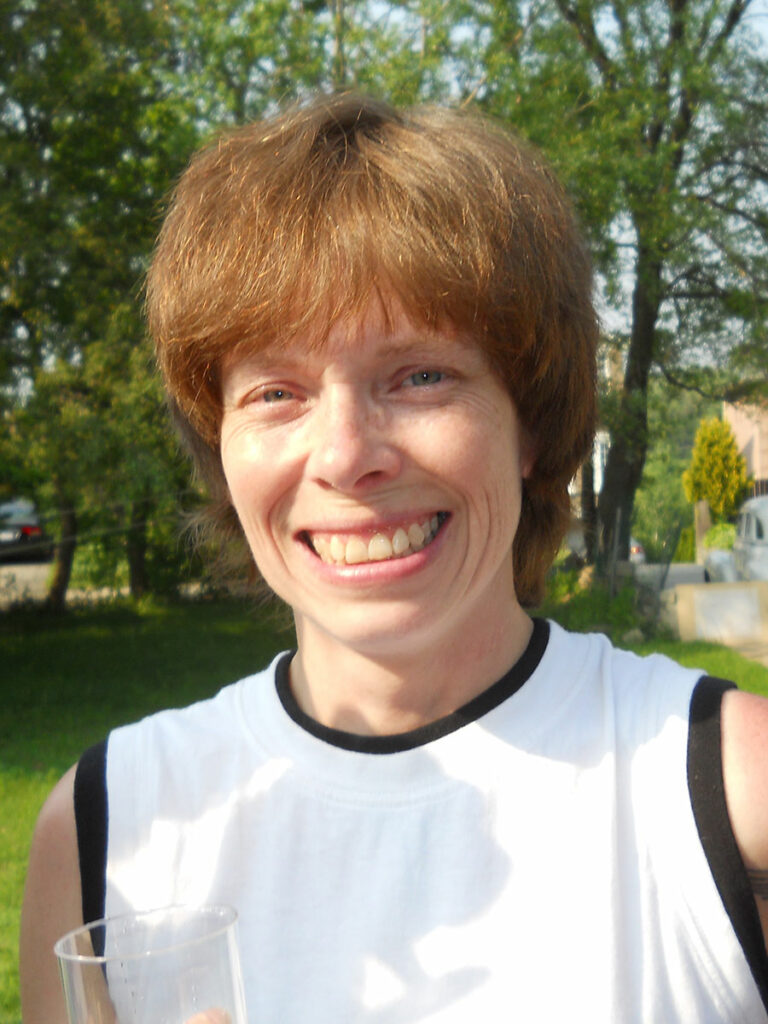Tammy Marquardt
Introduction
On May 18, 1991, 19-year-old Tammy gave birth to her first child, Kenneth.
Kenneth suffered from a number of serious health issues including asthma, pneumonia and epilepsy. The latter condition caused frequent and extremely severe seizures which saw Kenneth hospitalized several times over the course of his short life.
Kenneth’s Death and Autopsy
On the afternoon of October 9, 1993, Tammy went to check on Kenneth – then 2 ½ years old – who was napping on the bed in their spare bedroom. She thought she had heard him calling her. When she got to the bedroom, she found Kenneth tangled in sheets, gasping for breath and in obvious distress. She tried, unsuccessfully, to free him, before calling for an ambulance. The 911 operator instructed her to perform CPR, but she was unable to calm herself sufficiently to follow the instructions. The emergency crews arrived and took Kenneth to hospital, where he was revived; but tragically, the doctors determined that he had suffered irreparable brain damage. Three days later, Kenneth was taken off life support and passed away. Tammy gave permission for his viable organs to be harvested for donation, as she hoped that her tragedy could prevent other parents from suffering a similar loss.
In 1993, Charles Smith was the leading expert in Canada on criminally suspicious pediatric deaths. He was the Director of the Ontario Pediatric Forensic Pathology Unit at SickKids Hospital in Toronto, and frequently lectured on pediatric forensic pathology to Crown counsel, police officers and coroners. He was tasked with performing Kenneth’s autopsy. Smith concluded that Kenneth’s death was not accidental and, on November 23, 1993 – less than two months after losing Kenneth – Tammy was arrested and charged with the second-degree murder of her son.
Tammy’s Trial
Tammy was tried by judge and jury in Whitby, Ontario. Smith testified that Kenneth’s cause of death was asphyxia and surmised that his death was as a result of him being strangled or smothered. Smith’s testimony was central to the prosecution’s theory that Tammy had suffocated her son in a moment of frustration. In the eyes of the Crown, Tammy was a young mother with limited financial resources, parenting and coping skills, who was involved in an unstable relationship with Kenneth’s step-father. Smith pointed to petechial haemorrhages – small red spots on the organs and tissues that had not been donated – as proof of this theory. The Crown further relied on the testimony of several Children’s Aid workers to lend circumstantial support to Smith’s conclusion.
Tammy testified in her own defence and insisted that she was innocent, a position she unwaveringly maintained throughout her ordeal. The defence argued that Kenneth had died during an epileptic seizure, but they called no medical expert of their own to support this theory. Perhaps not surprisingly, the jury accepted the Crown’s theory, and, on October 24, 1995, Tammy was convicted of Kenneth’s murder. She was sentenced to life in prison without the possibility of parole for 10 years.
Tammy appealed her conviction to the Ontario Court of Appeal. On January 22, 1998, her appeal was dismissed by a unanimous court. Since Legal Aid Ontario refused to provide her with further funding, she was not able to make an application for leave to appeal to the Supreme Court of Canada. Having lost her son and her case, Tammy languished in prison.
AIDWYC and Tammy’s Exoneration
As early as 1991, concerns were voiced regarding Smith’s professional competence. That year, trial judge Justice Dunn acquitted a 12-year-old girl who had been charged with manslaughter following the death of the 16-month-old child she was babysitting. Justice Dunn was critical of Smith’s evidence, methodology and conclusion. Throughout the late 1990s and early 2000s, Smith continued to garner negative attention – though given what is now known about Smith’s reign of terror during these years, in retrospect the complaints were relatively few and far between.
In February 2003, the Association in Defence of the Wrongly Convicted (AIDWYC) wrote to the Crown Law Office Criminal (of Ontario’s Ministry of the Attorney General), requesting the release of autopsy materials from another of Smith’s patients for their work on the William Mullins-Johnson case. AIDWYC soon grew suspicious of Smith’s conclusions in other cases as well. In 2004, Tammy applied to AIDWYC for help with her case. In April 2005, AIDWYC wrote to Dr. Barry McLellan (then the Chief Coroner for Ontario) and Michael Bryant (then the Attorney General), urging a full public inquiry into Smith’s work.[1]
On June 7, 2005, Dr. McLellan announced in a press release that a formal review would be conducted of criminally suspicious child deaths for which Smith had performed the autopsy. By this time, Tammy had spent over a decade in prison. As part of the Chief Coroner’s Review – the precursor to the later and broader Inquiry into Pediatric Forensic Pathology in Ontario, commonly referred to as the Goudge Inquiry – Dr. Pekka Saukko, a Professor of Forensic Medicine at the University of Turku, Finland, was assigned to review Kenneth’s case.
In his October 2007 report to the Chief Coroner, Dr. Saukko concluded that Smith’s finding of asphyxia was “illogical and completely against scientific evidence-based reasoning.” He found that “[t]here is not sufficient evidence for the diagnosis of asphyxia to be made. It cannot be based only on petechial hemorrhages [the “red spots”] of thymus, pulmonary pleura and epicardium which are non-specific findings. The cause of death should be given as unascertained.” Later at the Goudge Inquiry, Dr. Saukko testified that the evidence that Smith had given at Tammy’s preliminary inquiry and trial was unprofessional and misleading.
In 2008, Dr. Simon Avis, the Chief Medical Examiner for the Province of Newfoundland, conducted a second comprehensive review of the medical evidence and circumstances surrounding Kenneth’s death. In his report, Dr. Avis agreed that Smith had wrongly attributed Kenneth’s death to homicidal asphyxia and concluded that Kenneth may have died during an epileptic seizure or from other natural causes. While Smith stated that the harvesting of several of Kenneth’s organs prior to autopsy was merely a “minor inconvenience,” both Dr. Avis and Dr. Saukko were critical of this fact.
On February 10, 2009, AIDWYC brought an application for leave to appeal Tammy’s case to the Supreme Court of Canada, along with the necessary application for an extension of time to file said appeal. The following day, the request for an extension of time was granted and, on March 12, 2009, Tammy was released from the Grand Valley Institution for Women in Kitchener, Ontario, pending the decision on her application for leave to appeal to the Supreme Court of Canada. She had spent nearly 14 years in prison.[2]
On April 30, 2009, the Supreme Court of Canada issued an order remanding the case to the Court of Appeal for Ontario for consideration of the fresh evidence and a determination of whether Tammy’s conviction constituted a miscarriage of justice. This process took two years, but on June 7, 2011, the Ontario Court of Appeal quashed her conviction and ordered that a new trial commence on February 10, 2012.
Before the new trial could begin, however, the Crown withdrew the charges against Tammy. That decision was no doubt based on the fresh medical evidence provided by experts: the Dr. Avis, and Dr. Christopher Milroy, an expert retained by the Crown. Both agreed that Sudden Unexpected Death in Epilepsy (SUDEP) could not be ruled out as the cause of death in Kenneth’s case. Furthermore, Dr. Avis suggested two additional alternative natural causes for Kenneth’s death, both well-known causes of sudden deaths in infants and children due to inborn errors of metabolism. These two alternative causes are known as medium-chain acyl-CoA dehydrogenase (MCAD) deficiency and cardiac conduction defects.
The Causes of Tammy’s Wrongful Conviction
Clearly, the overriding cause of Tammy’s wrongful conviction was the evidence of Charles Smith. As Commissioner Goudge put it, Smith had “neither formal forensic pathology training nor board certification in that field.” In short, he was a pediatric pathologist, not a forensic pathologist. In addition to being unqualified to do the autopsy work on which he spent so much time, Smith was a terrible expert witness. He consistently gave misleading statements and, at times, told outright lies on the witness stand. The reader is encouraged to view Commissioner Goudge’s report in its entirety.[3]
If not for Charles Smith, it is unlikely that Tammy would have spent almost 14 years in prison for a “crime” that never happened. That said, there were other factors that contributed to her wrongful conviction. The jury heard a considerable amount of evidence regarding her demeanor at the hospital, Kenneth’s funeral and upon her arrest. If this unreliable evidence were led at a trial today, it would likely be ruled inadmissible. While the trial judge instructed the jury not to place any weight on this evidence concerning the appropriateness of Tammy’s emotional reaction, the fact is that they heard countless witnesses recount and opine on how an innocent, grieving mother should react to losing a child. Further, the fact that the defence did not call its own medical expert to testify at trial in support of their theory that Kenneth had died as a result of an epileptic seizure was problematic. Legal Aid Ontario’s refusal to fund an appeal to the Supreme Court of Canada also cannot be ignored.
The Wounds AIDWYC Cannot Heal
Tammy’s wrongful conviction – like all wrongful convictions – had multiple causes. Most people cannot imagine the pain not only of losing a child, but also of having that pain unbearably compounded by an arrest, trial and wrongful conviction for his murder. Tammy experienced it all and spent 13 years in prison for a crime that did not happen. Though nothing can bring Kenneth back or restore the years that Tammy lost, AIDWYC fought for Tammy – as it does for all its clients – and the truth of her innocence was revealed.
[1] Inquiry into Pediatric Forensic Pathology in Ontario Report (the Honorable Stephen T. Goudge, Commissioner), Volume 2: Systemic Review (2008), online: http://www.attorneygeneral.jus.gov.on.ca/inquiries/goudge/report/index.html [“Goudge Inquiry”].
[2] Tracey Tyler, “Woman in case of disgraced pathologist freed on bail” (13 March 2009), online: The Star http://www.thestar.com/news/ontario/2009/03/13/woman_in_case_of_disgraced_pathologist_freed_on_bail.html
[3] See http://www.attorneygeneral.jus.gov.on.ca/inquiries/goudge/index.html


